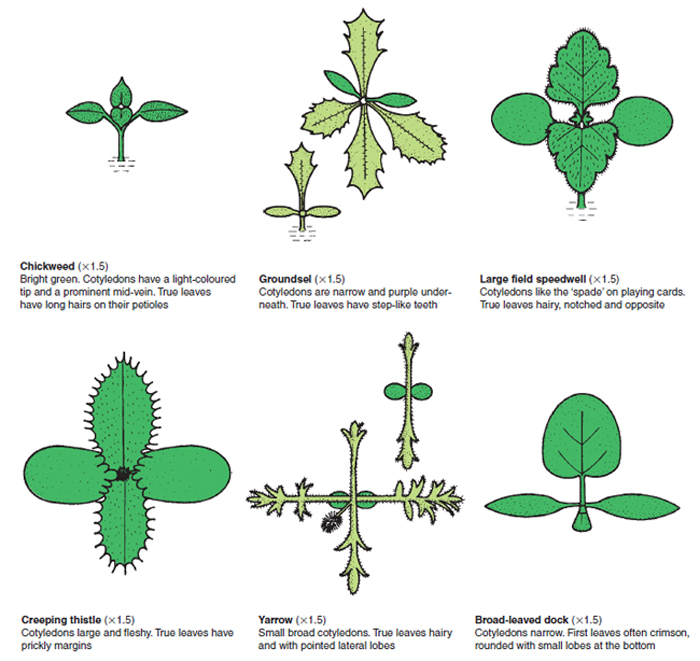As with any problem in horticulture, recognition and identification are
essential before any reliable control measures can be attempted. The
weed
seedling causes little damage to a crop, but will quickly grow
to be the damaging adult plant bearing seeds that will spread. The seedling stage is relatively
easy to control, whether by physical or by
chemical methods. Identification of this stage is therefore important and
with a little practice the gardener or grower may learn to recognize the
important weeds using such features as cotyledon and leaf shape, colour
and hairiness of the cotyledons and first true leaves (see Figure 13.3).
 |
Figure 13.3 Seedlings of common weeds. Notice the difference between cotyledons and true leaves.
(Reproduced by permission of Blackwell Scientific Publications) |
Within any crop or bedding display, a range of different weed species
will be observed. Changes in the weed flora may occur because of
environmental factors such as reduced pH, because of new crops that
may encourage different weeds to develop, or because repeated use
of one herbicide selectively encourages certain weeds, e.g. groundsel
in lettuce crops or annual meadow grass in turf. Horticulturists must
watch carefully for these changes so that their chemical control may be
adjusted. The mature weeds may be identified using an
illustrated flora book, which shows details of leaf and flower characters.





